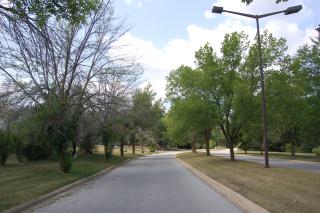![]() (319) 404-5550
(319) 404-5550 ![]() info@cousintreecare.com
info@cousintreecare.com
Fighting invasive emerald ash borers with woodpeckers and citizen scientists
Invasive non-native insects have been called the “wildfires of the East,” given the damage they cause to trees. One pest, the emerald ash borer, has killed hundreds of millions of rural and urban ash trees.

To help arborists and city planners track and treat potential outbreaks, U.S. Forest Service scientists seek efficient monitoring techniques.
Tree rings indicate the emerald ash borer arrived in the United States in the early to mid-1990s, probably embedded in shipping materials from eastern Asia. The beetle evaded scientists until 2002, when it was identified in millions of Detroit’s trees. Over the next two decades, it radiated through the Midwest, New England and the South — with clusters as far west as Colorado.
“We knew nothing about it at first,” said U.S. Forest Service entomologist Therese Poland, who has studied ash borer management since the beetle was first detected. According to Poland, early attempts to stymy its spread involved massive ash removal campaigns. But these failed — and cost thousands of dollars per tree.

As scientists continued studying the beetle, they developed better ways to detect and manage it. They improved beetle traps, bred resistant trees and experimented using parasitic wasps to control beetle populations.
To complement these options, Robert Haight, a Forest Service researcher in St. Paul, Minnesota, has proposed a more strategic approach: identifying beetle-infested ash trees before they show signs of damage. One way, he says, involves searching for woodpeckers.
The emerald ash borer hides its eggs in bark crevices and tunnels deeply within trees — invisible to humans, but not to woodpeckers. They pick at the tree’s bark, searching for tasty grubs.

Along with other research colleagues from the Northern Research Station, the New Jersey Institute of Technology, and the College of Saint Rose, Haight has developed a new model that combines a map of a city’s ash trees with a summary of their health. Multiple health categories denote unaffected, newly infested, and long-term infested trees. These highly specific categories improve upon previous models, allowing for more accurate forecasts of ash health.
These forecasts help city planners economize emerald ash borer management. For example, they can decide where to protect healthy ash trees by inoculating them with insecticide and where to remove low-value specimens.
Trees can endure infestations for a few years before exhibiting outward signs of damage, like yellowing leaves and dying branches. Once branches begin to die, insecticides may no longer prevent damage and death. Detecting vulnerable trees early gives arborists and others more opportunities for intervention.
Though emerald ash borer will likely remain an enduring problem, this new model, combined with other treatment options, informs and improves ash tree defense.
Communities can help. Haight noted that members of the public and tree care providers can track locations of potentially infested trees by searching for signs of the beetle — like woodpeckers.
“Surveillance, chemical insecticides, removing low-value trees: together these activities provide a cost-effective strategy for protecting high-value ash trees in your neighborhood,” said Haight.
Source :
https://www.fs.usda.gov/features/fighting-invasive-emerald-ash-borers-woodpeckers-and-citizen-scientists


